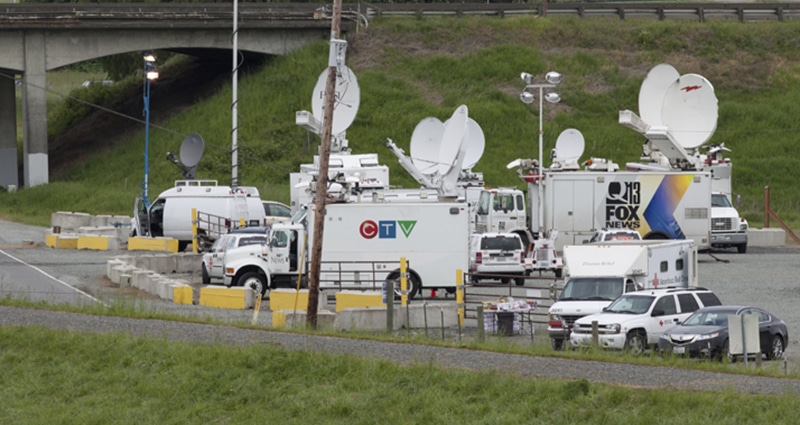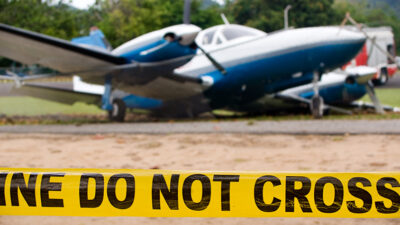Emergency Response and Fast-Moving Media

“Reporters thrive on the world’s misfortune. For this reason they often take an indecent pleasure in events that may dismay the rest of humanity.” —Russell Baker
As fast as air traffic controllers can raise the alarm about an aircraft accident, a news hound monitoring radio frequencies can churn a transmission into a breaking news story. By Tweeting, posting on Facebook or using other social media tools, information can be broadcast to the general public in minutes. Speculative, as-it-unfolds coverage fuels drama, which in turn fuels high media ratings. Sadly, the emotional well-being of families is rarely a priority of the media in their quest for ratings. If you are responsible for developing or managing your organization’s emergency response, you must be aware of the unique challenges modern media can create as you work toward the goal of compassionate family notification and support.
Organizations with effective emergency response teams use drills and exercises to sharpen their abilities to effectively respond. Through practice, they refine their plans so that in the event of a real emergency, they have mastered the basics and can adjust their response strategy to the unique needs of the accident.
One of the most important parts of an emergency response plan involves the procedures used to notify family members and emergency contacts. It is crucial to notify these people before they learn of the accident through media channels. Timely and appropriate notification is the foundation of a compassionate response. This critical component must be practiced, drilled and refined.
It is a daunting challenge
Because news travels so quickly, it’s probable that survivors may receive devastating news from the media or an unofficial source. In such cases the news may not be compassionately delivered, nor free of speculation. Emergency response teams are no longer in a race with just radio and television outlets, but in a race with every person who owns a modern mobile telephone. No matter how fast and connected your team may be, confirming and verifying incoming information takes time. Communicating inaccurate information only creates a level of mistrust and magnifies the emotional pain for the families involved. Speed must be balanced with accuracy.
In developing a notification strategy, it’s important to think about several points.
Train for the challenges
- Emergency Response Training, specifically notification training, should cover the potential emotional consequences of news media and social media interference.
- Team members should understand the importance of reaching emergency contacts ahead of the media but also be aware of the challenges involved.
- Notifiers will need a strategy toolbox to help them quickly establish credibility with the emergency contact/family member, especially in situations when notification has been delayed.
Review your plan
- Review your Emergency Response Plan, and in particular the notifications portion. It must include specific guidance for gathering, compiling and disseminating consistent and concise information to victims’ emergency contacts.
- Designate a point person, then create a checklist to help him or her quickly extract crucial information from briefings and updates so that it can be communicated to emergency contacts.
- Have a process in place to verify accuracy. Ensure that victims’ names are communicated accurately, emergency contact names and phone numbers are also transcribed correctly, and accident information is correct to the best of your knowledge. This will encourage trust and lend credibility to your team as it begins to establish relationships with emergency contacts.
Drill away
- Test your team’s notification skills in drills and exercises. For example, insert real-world obstacles such as a Facebook or social media posting that breaks news of the accident before official channels can do so.
- Create a timeline for the drill including the time the accident occurred and the time the families were notified. Use this during debriefing to discuss the challenges each team member faced.
- Role play. Have the team take turns being the “notifier” or the “family.” Then, discuss the possible emotional consequences of late, inaccurate, or uncompassionate delivery.
Your emergency response plan should be constructed with a foundation of compassionate support for the people who fly in your aircraft and for their families. Plan, train and practice your notification skills. It’s essential.
 Fireside Partners, LLC
Fireside Partners, LLCAn international leader in Corporate Emergency Response Plan (ERP) development, Crisis mitigation and organizational training and assessment for appropriate response.
http://www.firesideteam.com/
© 2025 Fireside Partners, LLC. All Rights Reserved.
Next ArticleRelated Posts

Code Red: Planning for the Cyberattack Aftermath
This is an era of rapid change and technological advancement, and although it is challenging, responsible organizations seek to manage and mitigate cyber risks. Insecure systems and uncertain people, added to inadequate contingency plans, create a perfect business continuity storm in the aftermath of a cyberattack.

Fatal Accidents and Personal Effects: Why Expert Handling Is Essential
The devastating consequences of fatal aviation accidents cannot be overstated. An organization relies on its Emergency Response Plan (ERP) to navigate such a tragedy.

